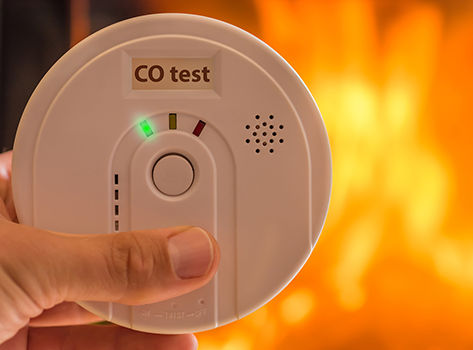
Each year more than 400 people in the U.S. die from accidental carbon monoxide poisoning, and thousands more need emergency care after an exposure.
Christopher Lobaito, MD, Atlantic Health emergency medicine physician, has some simple strategies to help prevent a potentially deadly event.
What is carbon monoxide poisoning?
“Carbon monoxide is a poisonous, odorless gas that takes the place of oxygen in your red blood cells,” Dr. Lobaito explains. “Without oxygen, your organs can be permanently damaged and even small amounts of carbon monoxide can be dangerous.”
The signs of carbon monoxide poisoning can vary. The most common symptoms include:
- Headache
- Confusion
- Vision changes
- Dizziness
- Seizures
Some people have chest pain, shortness of breath, nausea, vomiting and abdominal pain.
If someone in your household is exposed to carbon monoxide, Dr. Lobaito says to move them to a location where they can get fresh air and then go to the nearest emergency department. Doctors will confirm carbon monoxide poisoning with a blood test. The treatment for carbon monoxide poisoning is oxygen therapy.
Before going back to where you were exposed to carbon monoxide, call your fire department or gas company to ensure that the source is removed or repaired.
Where does carbon monoxide come from?
Any gas or fuel-burning appliance can create carbon monoxide. Stoves, furnaces, space heaters, generators, engines, water heaters and clothes dryers can all produce it. Other sources of carbon monoxide include fires and hookah pipes, which work by burning charcoal.
“Generators inside the home are a concern for carbon monoxide, especially in the winter,” says Dr. Lobaito. “We also see too many young people in the Emergency Department who are poisoned by hookah pipes, which is another reason to avoid tobacco.”
How to prevent carbon monoxide poisoning
You can take the following steps to avoid carbon monoxide exposure:
- Set up annual service appointments for gas appliances.
- Never use grills, stoves or ovens for heat indoors or inside a tent.
- Whenever possible, replace older appliances with new ones and have them professionally installed.
- Never leave a vehicle running in a garage, even if the door is open.
- Use mowers and other gas-powered tools, such as snow blowers and pressure washers, only in well-ventilated areas.
Because carbon monoxide is odorless and difficult to detect, every home should have detectors. Just like smoke alarms, carbon monoxide detectors must be checked twice a year to make sure they are working properly. And if your carbon monoxide detector goes off, Dr. Lobaito says you should never ignore it.
“Prevention is key when it comes to carbon monoxide poisoning,” says Dr. Lobaito. “Unfortunately, most of the people we see in the ER are exposed to the gas in their homes. The good news is a $20 detector is easy to install and it can help prevent a tragedy.”
Be Proactive About Your Health
To stay safe and healthy, it's good to have a primary care provider who knows and understands your health history and wellness goals.